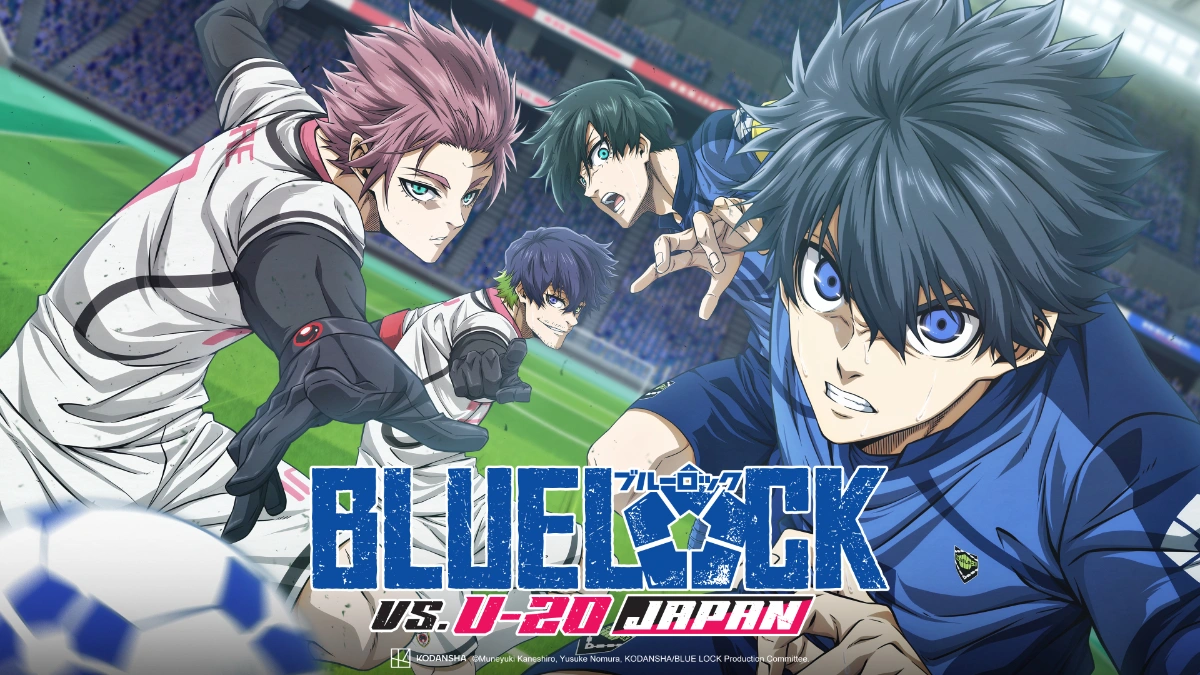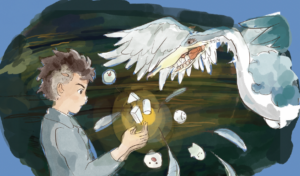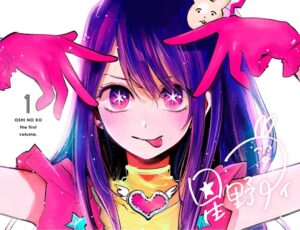If you’re looking for a refreshing, antiheroic sports anime that will overturn your perception of soccer and teamwork, Blue Lock is guaranteed to have you “locked-in.” After two years of anticipation, Blue Lock finally released its second season on Oct. 5. However, an increase in plot intensity has coincided with a decrease in production quality. After such a strong first season, will Blue Lock be able to continue its legacy and captivate its audience? Or is this the start of its downfall?
Adapted from the Japanese manga series Blue Lock (stylized as BLUELOCK) written by Muneyuki Kaneshiro and illustrated by Yūsuke Nomura, Blue Lock the anime is produced by Eight Bit. The story follows Isagi Yoichi, a striker on the Ichinan High School soccer team. After losing his final match in the qualifiers for the Japanese National High School Soccer Tournament, Isagi’s destiny takes a sharp turn when he receives an invitation to join Blue Lock—a radical project that trains 300 young forwards in isolation to create the world’s best striker. Blue Lock’s intense training and high-stakes matches among Japan’s top youth players pose daunting challenges for Isagi. But as the project unfolds, he forges friendships and rivalries, discovers his unique spatial awareness, and, most importantly, finds his inner “ego”—the insatiable drive and desire that will propel him toward becoming the best striker in the world.
I was skeptical when Blue Lock season one premiered. From Haikyu!! to Free! to Kuroko’s Basketball, the sports anime genre is saturated with works that emphasize the power of teamwork, friendship, and collective victory. Don’t get me wrong—I adore these works. The protagonists’ resilience, enthusiasm, and passion to pursue their dreams bring a sense of vibrancy and exuberance, a light at the end of the tunnel after a difficult day. However, this overused and formulaic framework is beginning to lose its charm.
After binge-watching Blue Lock, however, I was proven wrong. Instead of the typical “one for all, all for one” mindset that sports animes have adopted for years, Blue Lock introduced the revolutionary concept of an “egoist”—a player who seizes control of their own fate and strives to be the star on the field. While teamwork and tactics remain important, the players’ unique egos collide to create electrifying sparks, turning the soccer field into a stage of intense competition, innovation, and exhilarating transformation.
Season two picks up where season one left off, selecting players for the showdown between Blue Lock and the Japan national U-20 team. This match determines the fate of the Blue Lock project: victory means the team can represent Japan internationally in the FIFA U-20 World Cup, while failure will terminate the project. Having endured ruthless rounds of selection for the match and reunited with friends and rivals alike, Isagi now faces a greater challenge—proving his worth against stronger opponents and climbing his way to the top.
The anime’s OP (opening theme song) also signified season two’s transition to a new stage of the project by highlighting the narrative of Itoshi Rin, the prodigious No. 1 player at Blue Lock. As the younger brother of world-class soccer midfielder Itoshi Sae, and Isagi’s greatest rival, Itoshi Rin takes center stage. Flashes of Rin’s backstory and his confrontation with Sae during the U-20 match foreshadow his character development and the pivotal role he’ll play in Isagi’s journey at Blue Lock. The OP’s art style also subtly evolves; an abstract ink painting aesthetic contrasts the dynamic, sharp visuals of season one. These design elements make the scenes even more vibrant and powerful, enveloping the audience with the games’ intensity and fierceness.
Nevertheless, despite these exhilarating storylines (shout out to Muneyuki Kaneshiro for his amazing writing) and innovative experiments with the OP, the first two episodes of season two are disappointing. Besides Isagi’s well-criticized, obnoxious signature green aura and the rushed pacing of the plot, the overuse of CGI and freeze frames severely undermines the viewing experience. This problem is especially notable in episode two. Not only are characters like Hiori Yo poorly rendered with crude lines and disproportionate facial features that fail to reproduce the manga’s refined style, but the continuous freeze frames and distorted filters left this episode feeling like, as commented by a viewer on IMDb, a “slideshow.” It is no surprise that episode two received a 6.3 rating on IMDb, the lowest of any Blue Lock episode to date. With Blue Lock’s manga sales exceeding 10 million copies, season one winning the IMDb 2024 Sports Anime of the Year Award, and a steady stream of merch sales, fans are refusing to accept financial setbacks as a valid excuse.
I love Blue Lock, both the manga and season one of the anime. Its innovation, vibrancy, and characters who are relentless in the pursuit of their dreams make the story so captivating. Thus, having read the manga, I mourn the spectacle that I know season two could’ve been. Looking forward, if the production team fails to recognize the problems with the anime and refuses to take remedial measures, Blue Lock’s reviews and ratings could face a severe drop in the near future, tarnishing the manga’s beloved reputation. As a fan, I hope Blue Lock can avoid receiving yet another strike.





